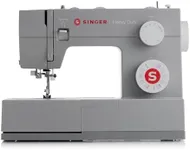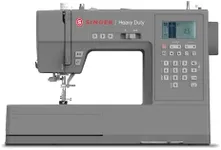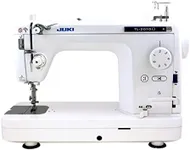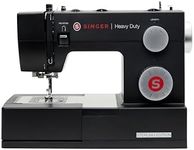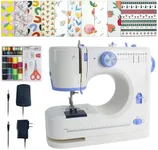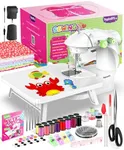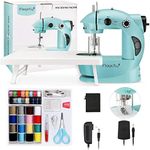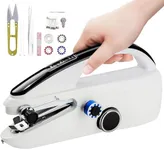Buying Guide for the Best Heavy Duty Sewing Machines
Choosing the right heavy-duty sewing machine can make a significant difference in your sewing projects, especially if you work with thick fabrics or multiple layers. Heavy-duty sewing machines are designed to handle more demanding tasks than regular machines, offering more power, durability, and specialized features. To find the best fit for your needs, it's important to understand the key specifications and how they align with your sewing requirements.Motor PowerMotor power is a crucial spec for heavy-duty sewing machines as it determines the machine's ability to handle thick fabrics and multiple layers. Higher motor power means the machine can sew through tougher materials with ease. Motor power is usually measured in amps or watts. For light to medium-heavy fabrics, a motor with around 0.5 to 1 amp (or 50 to 100 watts) might suffice. For very thick or heavy materials like leather or canvas, look for a motor with 1.5 amps (or 150 watts) or more. Consider the types of projects you plan to undertake and choose a motor power that matches those needs.
Stitch SpeedStitch speed, measured in stitches per minute (SPM), indicates how fast the sewing machine can sew. Higher stitch speeds allow you to complete projects more quickly. Heavy-duty machines typically offer speeds ranging from 800 to 1,500 SPM or more. If you frequently work on large projects or need to complete tasks quickly, a higher stitch speed will be beneficial. However, if precision and control are more important for your work, a machine with adjustable speed settings might be a better choice.
Build QualityBuild quality refers to the materials and construction of the sewing machine. Heavy-duty machines often feature metal frames and components, which provide greater durability and stability compared to plastic parts. A robust build ensures the machine can withstand the rigors of heavy use and last longer. When choosing a machine, look for one with a solid metal frame and high-quality internal components. This is especially important if you plan to use the machine frequently or for demanding projects.
Presser Foot PressurePresser foot pressure is the amount of force the presser foot applies to the fabric. Adjustable presser foot pressure is important for heavy-duty sewing machines because it allows you to customize the pressure based on the thickness and type of fabric you are working with. For thick or multiple layers of fabric, you may need to increase the pressure to ensure even feeding. Conversely, for delicate fabrics, reducing the pressure can prevent damage. Choose a machine with adjustable presser foot pressure to give you the flexibility to handle a variety of materials.
Stitch OptionsStitch options refer to the variety of stitches a sewing machine can perform, including straight, zigzag, and decorative stitches. While heavy-duty machines may not offer as many stitch options as regular machines, they should still provide a good range of essential stitches. Consider the types of projects you plan to work on and ensure the machine offers the stitches you need. For example, if you need to sew buttonholes or perform decorative stitching, make sure the machine includes those capabilities.
Throat SpaceThroat space, also known as the harp space, is the distance between the needle and the body of the machine. A larger throat space allows you to handle larger projects and more fabric with ease. This is particularly important for quilting or sewing large items like curtains or blankets. If you frequently work on large projects, look for a machine with a generous throat space to provide ample room for maneuvering your fabric.
Ease of UseEase of use encompasses features that make the sewing machine user-friendly, such as an intuitive interface, easy threading, automatic needle threader, and clear instructions. These features can significantly reduce the learning curve and make your sewing experience more enjoyable. If you are a beginner or prefer a straightforward sewing process, prioritize machines that offer user-friendly features. Even experienced sewers can benefit from a machine that simplifies complex tasks.


